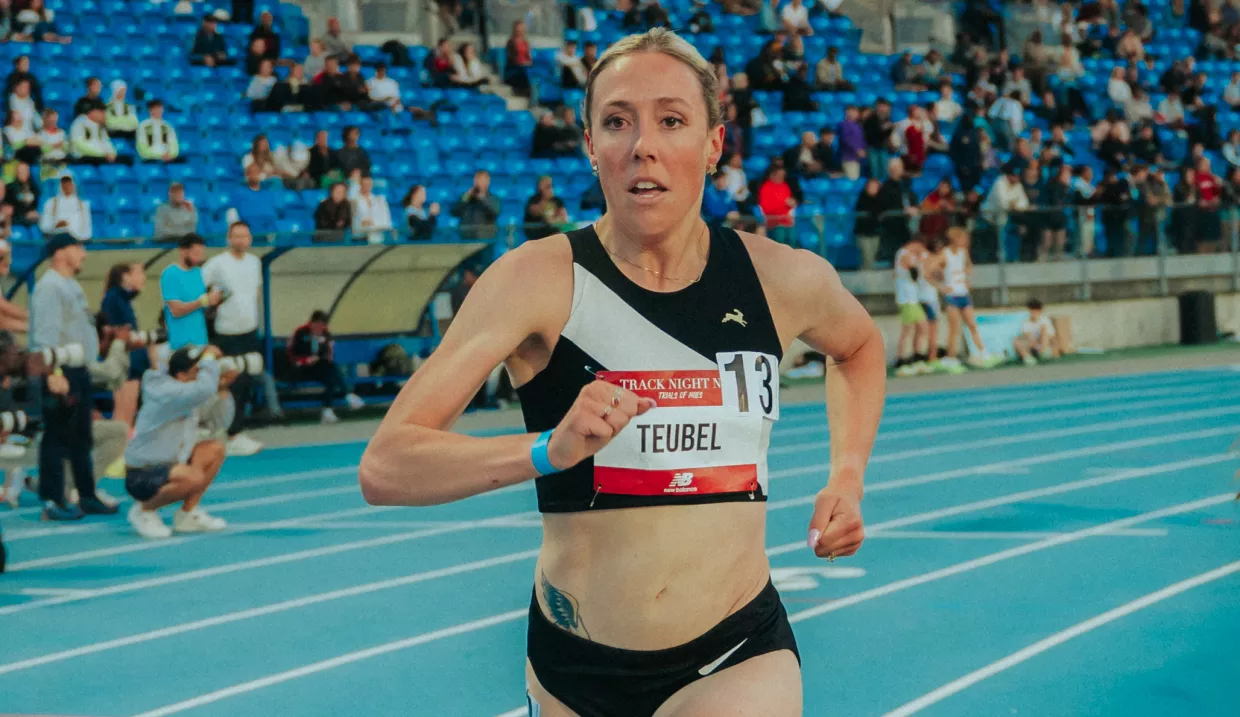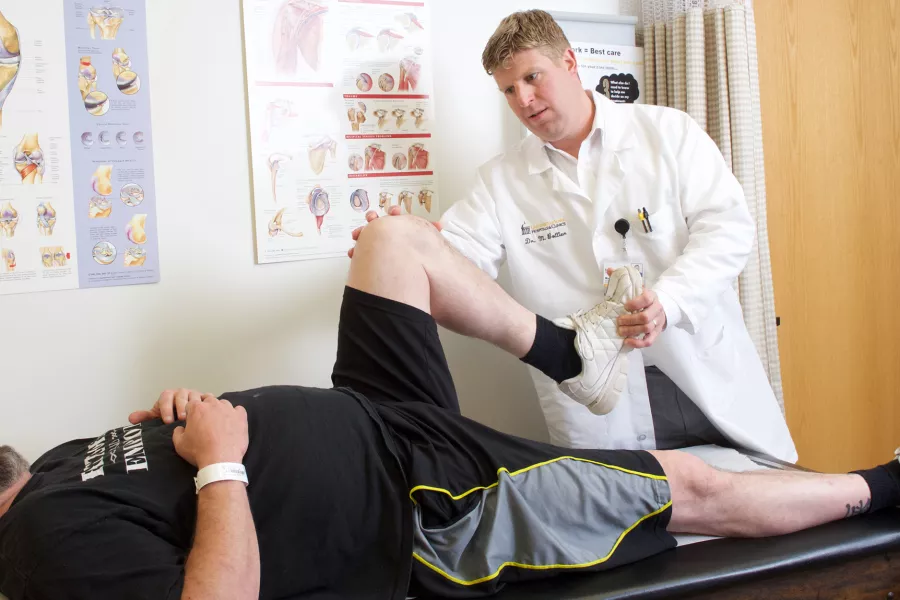UI Sports Medicine helps pro runner get back on track
Specialists with the Endurance Athlete Care program customized a treatment plan for an Olympic hopeful's severe back pain.

When Alexina Teubel first got an MRI of her lumbar spine at her local health care provider, she was told she had a few minor disc protrusions but was fine otherwise.
But Teubel, a professional track runner and cross-country and track and field coach at the University of Northern Iowa, knew the cause of her back pain was more severe. She’d been training to compete in the steeplechase at the 2022 World Championships. Within a few weeks after noticing her pain, she could barely walk.
Teubel decided to get a second opinion at University of Iowa Sports Medicine, where orthopedic specialists with the Endurance Athlete Care program discovered she had a sacral stress fracture—a small break in the sacrum, which is the shield-shaped bone at the base of the lower spine that’s attached to the pelvis.
Expertise treating runners helps pinpoint uncommon injury
Sacral stress fractures are rare, except in one patient population: runners. This injury has sidelined many top pros, including steeplechase World Champion and Olympic bronze medalist Emma Coburn.
Tyler Slayman, MD, a family medicine and sports medicine specialist who leads the Endurance Athlete Care program, wasn’t surprised that Teubel’s previous clinicians hadn’t caught her sacral stress fracture. But in working with runners, Slayman knew “it fit with her story of being a pro athlete who was increasing her training volume. She was at risk for a stress injury,” he says. Slayman ordered another MRI, this time focused on Teubel’s sacrum. The scan confirmed her injury.
While disappointed that her 2022 track season was over, Teubel was also relieved after seeing Slayman and the Endurance Athlete Care team.
“I left that appointment knowing I had a sacral stress fracture, but I felt a million times better than I did before, knowing someone’s going to help me get out of this,” she says.

Get back in the game
UI’s sports medicine experts have experience treating common and rare injuries alike.
Creating a customized recovery plan
The UI Sports Medicine team got to work on a care plan specific to Teubel’s injury and lifestyle. In addition to ordering a scan to measure Teubel’s bone density, Slayman prescribed no unsupported running for at least six weeks. Instead, Teubel took advantage of the University of Northern Iowa’s athletics facilities to run in a pool and use an elliptical machine and anti-gravity treadmill. She also did intense workouts on a bike. Together, these activities helped her maintain her cardiovascular fitness.
At first, Teubel ran completely supported by water or machine. As time passed, this level of support dropped until she was ready to run on a hard surface again.
When she first tried running without any support, Teubel says she didn’t feel quite right, so Slayman ordered another MRI, which showed that Teubel was only 90% healed. So, she did another two weeks of non-impact training.
“I was walking around with pain for so long that I kept thinking, if I run, it’s going to hurt,” she says. The additional MRI “was just so I could have peace of mind of knowing it’s not still broken.”
The right diagnosis and treatment lead to success
The treatment plan worked. In 2023, Teubel ran a full track season, won a handful of races, and achieved personal records in 800-meter, 1,500-meter, and track mile events. She got better in every event she competed in, she says, though she opted not to compete in steeplechase because she didn’t feel she’d had enough time to train for the running and jumping required.
In June 2024, Teubel competed in her third U.S. Olympic Team trials, advancing to the semifinals in the 1,500-meter run.
Teubel credits Slayman and the UI Sports Medicine team for helping her get back on track.
“I’m so lucky that I was able to see someone who had experience with actual running and not sports in general,” she says. “It’s nice when someone has an understanding of why you’re there.”
“As a runner myself, I know what a runner goes through. One thing they don’t want to hear is that they need to stop running,” Slayman says. “My goal is to do everything I can to keep that person running in a pain-free way.”